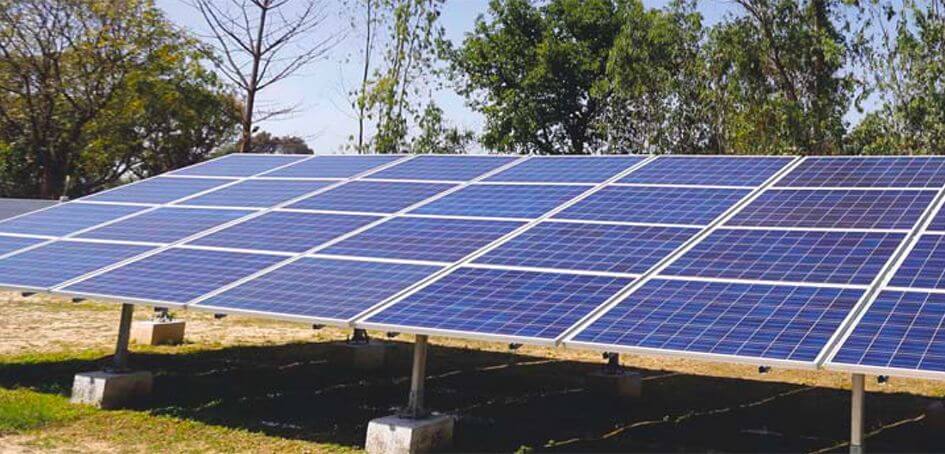India has roughly 300 million people without access to electricity, and Nigeria about 100 million. Together, the countries account for some 40% of the world’s total unelectrified population, and that percentage is even higher if you just include rural inhabitants. But the countries are proactively working to address the problem, and both have put forward federal mini-grid policies that offer huge potential for scale. The policies define what a mini-grid is, simplify permitting and perhaps most importantly resolve what happens if/when the grid arrives to an area where a mini-grid has been established. The policies are a critical market signal, offering policy certainty that is still needed across much of Sub-Saharan Africa and the rest of South Asia. Our sector stakeholders -- governments, developers, civil society groups, financiers -- have much to learn and emulate. For policy-makers with vision, mini-grids can help achieve the SDGs in a more reliable, clean and affordable manner.
Below are highlights of the policies.
INDIA
Definition: 10kW to 500kW
Last year, India’s government put forward a target of 10,000 mini-grids with 500MW capacity within five years. Currently, Smart Power India, the country’s leading mini-grid initiative, has 106 operating mini-grids through its network of private energy service company (ESCO) partners. India issued its draft mini-grid policy in June 2016, and although it is still awaiting final approval, no major changes are expected when the policy comes out (likely Q4 this year).
Highlights of the policy include: 1. Grid as back-up: mini-grid operators may be allowed to procure power from distribution companies (DISCOMs) if they need back-up. Regulator can design tariffs and hours allowed for that, 2. Mini-grid as last-mile franchisee: DISCOMs may consider mini-grid operators as distribution franchisees for last-mile electrification, and the policy provides a lot of flexibility in case of grid extension to mini-grid sites (they can continue to operate or not), 3. AC/DC: the policy allows for both types of systems, 4. Less red tape: the policy provides a single window clearance mechanism for project approval, 5. Government support: a 30% capital expenditure subsidy, 6. Mutually agreed tariffs: the policy is non-binding on tariff structure, although states have dispensation to set tariffs, and 7. Under the grid: the policy allows mini-grid operators to enter under-served not just unelectrified areas.
India Rural Energy Development Agency (IREDA) is making financing available through a line of credit from KfW. Mini-grid developers have started to access this money.
At the state level, Bihar has set a 100 MW target for mini-grids. Uttar Pradesh, the state with the largest unelectrified population, also has a mini-grid policy, but did not yet set a target. Other states expected to follow suit with policies include Odisha and Jharkhand.
“The federal policy is a positive signal to the states, to investors and to developers that ‘we care’,” says Deepak Gupta, of the Shakti Sustainable Energy Foundation. “Despite the government push on grid extension, it understands these interventions can play a role in line with DISCOMs.”
NIGERIA
Definition: up to 1 MW (2 types: isolated and inter-connected)
Issued in May 2017, Nigeria’s mini-grid policy aims to attract more private sector investment in rural electrification and play a major role achieving SDG7. Although the policy does not set a target, GIZ, which has advised the government, has estimated based on its GIS mapping that there are 4,000 population clusters that could use mini-grids to power 12.8 million people. In addition, a major benefactor of the new policy is expected to be captive and embedded power generation for the manufacturing sector, which is chronically short of reliable, affordable power.
Key aspects of the new guidelines: 1. Grid back-up: electricity distribution companies (or distribution licensees) can buy power from mini-grids within their distribution networks to boost power supply, 2. Simplified permitting: for mini-grids below 100kW, a permit is optional and the developer is only required to register with Nigerian Electricity Regulatory Commission (NERC); for those between 100kW and 1 MW a permit is needed if the planned site is within the 5-year expansion plan of the distribution licensee covering that area, 3. Grid arrival: the developer receives fair compensation if the grid reaches them, 4. Consumer protection: communities are given considerable powers, including reserving sites for mini-grid developers and giving an exclusivity period for up to 12 months. They can also request an inspection of a mini-grid developer’s accounts to trigger a tariff adjustment; for interconnected mini-grids, the community has to be part of the agreement between the mini-grid developer and the distribution licensee before construction. It must agree with proposed retail tariffs, which also requires NERC approval.
Concerns exist about the requirement for mini-grid developers to obtain permission from the distribution licensee and confirm if the area is within the 5-year expansion plan, since this puts developers at the mercy of the licensees. Also, rather than requiring all land to be obtained prior to getting a license (as currently stipulated), NERC should reduce up-front risk by issuing approval if the investor can show financial and technical capabilities.
Finally, while the policy provides for compliance with all existing environmental laws, it does not state explicitly if expensive Environmental Impact Assessments (EIAs) are necessary. A solution is requiring mini-grid developers to register with the Federal Ministry of Environment. The government should also stipulate and enforce standards for the various components used in the mini-grids (batteries, panels, wires, etc.) and enforce a disposal program.
“The guidelines have been long awaited by entrepreneurs interested in investing in mini-grids to reach unserved and underserved communities,” says Ify Malo, Nigeria campaign director for Power For All. “It will go a long way in stimulating market growth.”
